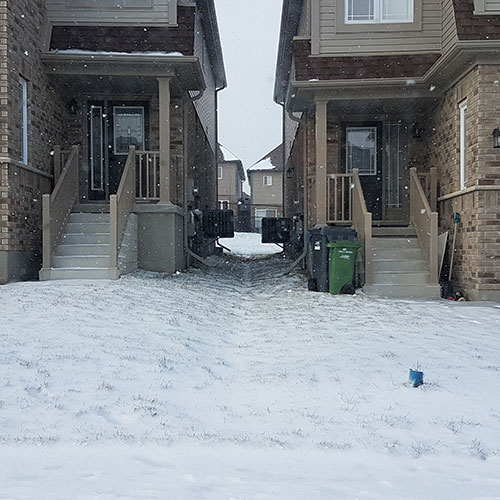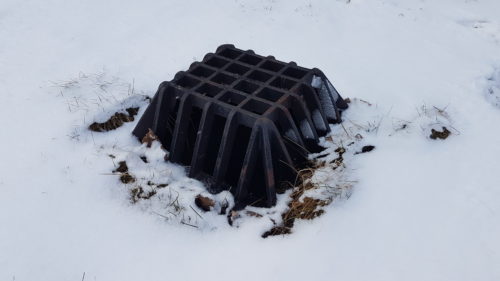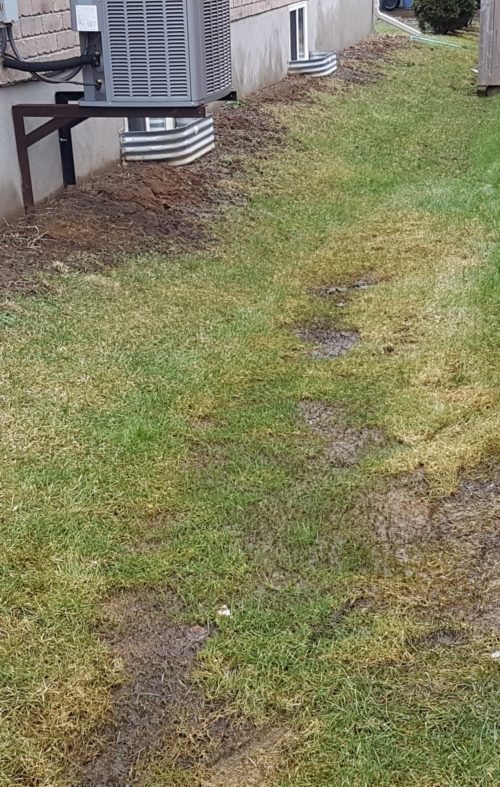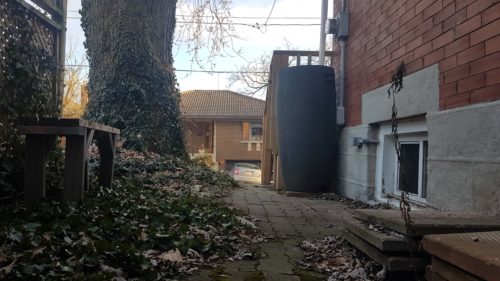On this page
Lot grading helps ensure that rain and snow melt flow away your home, and other buildings on your lot, to a better location such as a catch basin. Proper lot grading can prevent ponding of rain and snow melt, settlement, damp basements, damp yards and disputes between you and your neighbours.
When your subdivision was designed, a drainage plan was created for each lot. Now that you’ve moved in, there are things you can do to ensure your lot continues to have good drainage.
You should:
- Maintain swales and catch basins as originally designed
- Keep swales and catch basins free of obstructions
- Ask us if you see there are stormwater management features in your yard that you don’t understand
- Talk with and consult with your neighbours about any work you plan to do that could impact drainage in any way
- Consult an expert prior to starting any project that could potentially impact drainage
- Get a copy of your site plan to help you with the layout of your project
- A raised patio, walkway, or other hardscaping should be at least 2 Feet (0.61m) from any property line or swale
You should avoid:
- Discharging water from the roof, foundation or yard directly onto walkways, stairs or adjacent properties
- Filling a swale with anything that could alter the flow of water (e.g., concrete, asphalt, rocks, soil or woody plants and trees)
- Raising or lowering the grade of your yard. Changing the grade of your yard could potentially impact the flow of water on a neighbouring property.
- Using your fence as a retaining wall. Retaining walls should be at least 15 centimetres away from any property line. Retaining walls over 1m in height require a building permit.
- Building raised gardens or patios that could potentially impact flow of water
- Dumping any other liquid other than water anywhere on your yard
- Using materials that prevent surface water from soaking into the ground
From the ground up: who’s responsible and when
Subdivision drainage plans are designed in accordance with City standards and by an engineer. These plans ensure that water will flow away from homes to prevent ponding, basement flooding and to ensure the yards will drain properly. Each lot will have a site plan, which details how each lot should drain.
Once the plan is approved by the City, and the lot has been graded and sodded appropriately by the builder, a lot grading and drainage certificate is issued by a surveyor or engineer for the property.
As a homeowner, it is your responsibility to make sure that water continues to flow away from your foundation and does not impact neighbouring properties. Regular lot maintenance will ensure lot drainage always works as designed.
Should you alter your property in a manner that changes the way surface water flows, it is your responsibility to take appropriate steps to correct the issue. There are various regulations that place limits on alteration of property and construction. Some of these are controlled through the building permit process (e.g., pool and accessory structure permits), while others are regulated through city bylaws (e.g., Property Standards and Stormwater).
Drainage features on your property
Some of the drainage features on your property are protected by City bylaws (Property Standards Bylaw and Stormwater bylaw).
If you are planning a landscaping project, and/or are unsure of what you can and cannot do on your lot, let us know. We are here to help. If you are experiencing any drainage problems that you think may be due to your neighbours’ landscaping or downspouts, you should talk to them and explain how they may be negatively impacting your property. If this does not work, contact us and we will do our best to help you out.
Which way does your lot drain?

Back to front drainage
In this situation, the highest point in your yard will be at the back of your property. Any excess surface water will flow from the back of your property to the front where it will discharge at the street into a storm sewer. These types of properties often have a raised area (drainage apron) in the back yard so that water can flow around the house and into side yard swales.
Split drainage
In this situation, the highest point of your yard will be at the side of your house. Some surface water will flow to the street, while the rest of it will flow to the back of your lot. Water that flows to the back will be collected in a swale or catch basin and then be discharged into a storm sewer.
Drainage swale

A swale is a shallow ditch designed to collect and carry water to a designated spot (e.g., drain to the street or a catch basin). As swales may collect water from multiple properties before discharging it further away, it is important to not fill or obstruct the swale. Swales are commonly found swales between houses and in backyards.
Backyard catch basin

A backyard catch basin collects water runoff from a large area and directs it into an underground storm sewer. They are located at low points in a subdivision, and have a metal grate to allow water to enter. If you have a catch basin on your property, it’s your responsibility to maintain it.
Drainage apron
A drainage apron is a depression located at the rear of a dwelling, approximately 4 metres from the rear foundation wall. The area between the house and the small depression will gently slope up towards the house. The apron carries surface water coming from the rear of the lot to the swales in the side yards.
Infiltration trench or gallery
An infiltration trench or gallery is an underground feature that is generally found at the rear of a newer lot. It is an excavation that is filled with gravel that helps to speed up the rate that water soaks into the ground. An infiltration trench or gallery may service one or multiple lots.
As a property owner, it’s your responsibility to maintain drainage features on your property. If a drainage feature falls on the property line, this becomes a joint responsibility with your neighbour.
Looking to buy a home in Guelph?
Here are some things to keep in mind.
- Homeowners are responsible for maintaining any drainage/storm water management features such as swales and catch basins for as long as they own the house
- Look for swales and catch basins on the property and assess their condition. You are looking for signs of pooling, low spots, and potential blockages as these could have a negative impact on your property.

- Inspect the land around the house. With good lot grading, the land will slope away from the house, therefore directing water away from the building. A house with poor lot grading, may cause adverse impacts on your property(pooling, foundation damage, wet basement)

- Contact us for information on how to get your site plan and drainage certificate.
For more information
Engineering and Transportation Services
519-837-5604
[email protected]
